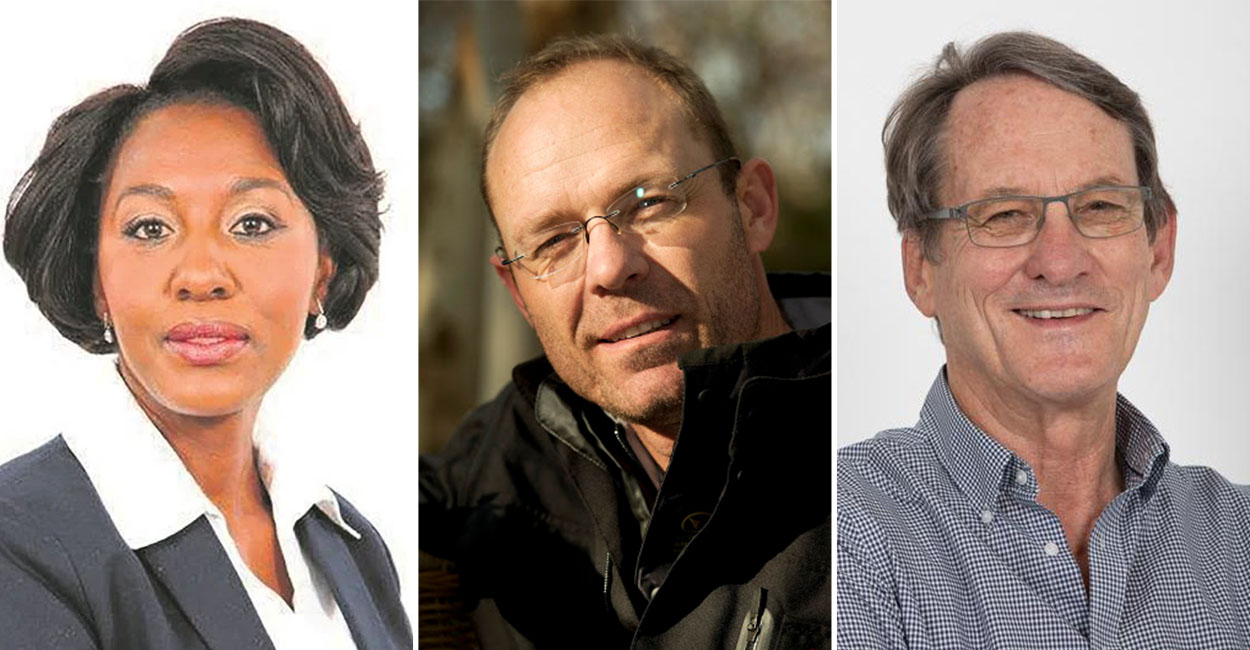As with most aspects of property, making the business case for urban renewal of industrial and other neighbourhoods involves getting the location, pricing and timing just right. Developers in these areas tend to be more entrepreneurial and often have to identify opportunities that form part of a broader strategy for the location rather than creating just a single, attractive development.
The upliftment of areas that have fallen out of favour, but have a central location, are increasingly being driven by demand for more competitive rentals, an alternative lifestyle, convenient nearby retail spaces and less traffic and congestion than that in nearby desirable areas. Urban renewal is a delicate balance of the old and new, time and money, and upliftment alongside respect for those who might be affected by the development of the area. When this tightrope act can be mastered, it results in some of the more interesting areas cities have to offer. These developers are trying to find that balance:
FINANCIAL DISTRICT, JOHANNESBURG CBD
“It’s about seeing the potential in an area — and it has to make sense financially,” says Herman Schoeman, CEO of Urban Ocean, which is developing a number of buildings in Johannesburg’s CBD. “You have to come in at the right time, at the bottom of the trend, and then try to impact the city or the streets around you to help create a positive trend that you can then ride.” Urban Ocean owns 11 buildings along Commissioner Street, between Rissik and Simmonds Streets. Schoeman says the opportunity in Johannesburg’s CBD lies in the banks, mining houses and provincial government offices in the area, while most residential buildings and retail spaces have become dilapidated. “There are a lot of corporates in the area and they have a vested interest in ensuring that the area is maintained,” Schoeman says. His company’s strategy has been to reach for what he describes as “low-hanging fruit” — buildings that still have electricity and working lifts. He says it is vital to have an overall vision of renewal. “Most developers in this area are focusing on live, work and play. You can’t just do residential — you need a mix and it’s important to start bringing in lifestyle elements.” In its buildings, Urban Ocean has a co-working space named Urban Collective. It has attracted coffee shops, a pop-up arcade for fashion designers and two new non-profi t companies, WeThinkCode and Digital Academy, to lure young people to work in coding jobs. WEX1, WOODSTOCK, CAPE TOWN Signatura and Indigo Properties have taken a similar approach to uplifting an area in Woodstock, Cape Town, centred around their joint venture development WEX1. This nine-storey, 214-apartment block now under construction will be a mixed-used development on Lower Main Road. “The value that has grown in the central part of the city – in the Cape Town CBD – has started to flow out towards the technically suburban area of Woodstock,” says Signatura director David Cohen. “The area is crying out for upgrades of various kinds – infrastructure, security and the development of accommodation close to the centre of Cape Town.” Again, WEX1 isn’t a standalone development, but integrates with a broader strategy for the area. “It will bookend the whole of Lower Main Road between the Biscuit Mill and the Woodstock Exchange. Access to Woodstock Station will become safe, and we are encouraging a car-free lifestyle among residents. Parking bays are an optional extra and if you don’t take a bay with your apartment you’ll get a free bicycle,” says Cohen. The developers demolished an under-used and dilapidated commercial and industrial block to make way for WEX1. It will ultimately feature eateries, coffee shops and retail space on the ground floor, including a fresh food and vegetable outlet. Developers should be aware of concerns about displacing existing lower-income residents to make way for costly new developments.
13 BRICKFIELD ROAD, SALT RIVER, CAPE TOWN
Adjoining Woodstock is Salt River, once the industrial heart of Cape Town, and the site of a substantial urban renewal initiative made up of several projects that aim to increase and upgrade the available space – from the renovation of industrial buildings and the upgrading of sidewalks to the creation of a community playpark and art installations. The development is a partnership between Investicore and Construct Capital. Investicore CEO Dawie Swart acquired 13 Brickfield Road in May 2015. With finance from Construct Capital they have redeveloped it into a mixed commercial and retail space housing The Deckle Edge, Bootlegger and Woodstock Bakery, among a mix of creative businesses. “I aim to create an environment that can accommodate an eclectic mix of businesses to serve the area … from a chef’s academy, art supply store and restaurants to innovative tech companies and other creative industries,” says Swart. Rentals are “not inexpensive”, driven by the demand for space, less traffic and congestion and its proximity to the station. He says Salt River lends itself to redevelopment because it contains large industrial properties, which means the land assembly process is easier and less invasive to existing residents.
LORENTZVILLE, JOHANNESBURG
Brian Green’s Group 44 company has been involved in high-profile urban renewal projects in Johannesburg, including 44 Stanley Avenue – the uplifted warehouse area in Milpark that is now an exclusive retail and restaurant destination. He is now tackling Lorentzville, a suburb on the edge of the CBD, where Nando’s has its head office. But instead of gentrification, Green is determined to create a space that accommodates people already living there. “We’re trying to get involved in the neighbourhood and take it along for the ride,” he says. “We want to employ and work with the residents on our more formal operations, and find new ways of doing business. Hopefully they will end up with more value in their neighbourhood.” The 30,000m2 development will be centred around an artisanal campus, accommodating people from the area, including carpenters, metal workers, glass blowers and framers, who will make use of one another’s skills.
RIVERTOWN TRIANGLE, DURBAN CBD
Durban is also enjoying its share of urban renewal. One high-profile development is Propertuity’s Rivertown Triangle in the central city. The developer has refined its model in Johannesburg’s Maboneng precinct, a reclaimed warehouse district that is a go-to destination for tourists and residents. When complete, the Rivertown Triangle will comprise three-and-a-half blocks with 23 developments – offices, restaurants, nightlife destinations, residential blocks and a boutique backpackers. Already complete is 8 Morrison Street, an industrial warehouse co-working office and retail space, designed to attract start-ups, entrepreneurs and creatives. It also has cafes and retail stores. The concept is described as “Beach. City. Life.” with the intention of allowing residents and visitors to enjoy what the city has to offer in one space.
[/et_pb_text][/et_pb_column][/et_pb_row][et_pb_row admin_label=”row” _builder_version=”3.0.47″ background_size=”initial” background_position=”top_left” background_repeat=”repeat”][et_pb_column type=”4_4″][et_pb_image src=”https://propertyprofessional.co.za/wp-content/uploads/sites/2/2018/02/Rivertown-Murals-16.jpg” _builder_version=”3.0.98″ use_border_color=”off” border_color=”#ffffff” border_style=”solid” animation=”off” sticky=”off” /][/et_pb_column][/et_pb_row][et_pb_row admin_label=”row” _builder_version=”3.0.47″ background_size=”initial” background_position=”top_left” background_repeat=”repeat”][et_pb_column type=”4_4″][et_pb_text _builder_version=”3.0.47″ text_font=”Roboto|on|||” background_size=”initial” background_position=”top_left” background_repeat=”repeat”]
Agents on commercial urban revival
Rawson Properties Northcliff franchisee Jan Oberholzer says the reestablishment of retail along old commercial streets, and economic and social trends favouring pedestrian-oriented environments, have made old neighbourhoods appealing to investors. Oberholzer says many old buildings have “exquisite architectural features” and are of historical importance. Moreover, they can be easily converted into shops, restaurants and residential units. “By adding residential units you are increasing the density, thus creating a community to increase the sustainability of the neighbourhood,” he says. The repurposing of old warehouses into storage units or smaller commercial units can also make it more affordable for smaller businesses to own or rent. Jayson Sprawson, a Tyson Properties director heading developments and commercial property, says that in older suburbs in need of regeneration, prices for both buying and renting are lower. “This means that elements such as young entrepreneurs opening up edgy new concept businesses, creative agencies, coffee shops and eateries become catalysts for exponential growth.” Sprawson believes this attracts developers and big business, and the upward trajectory of “on trend” old neighbourhoods becomes established and irreversible.







